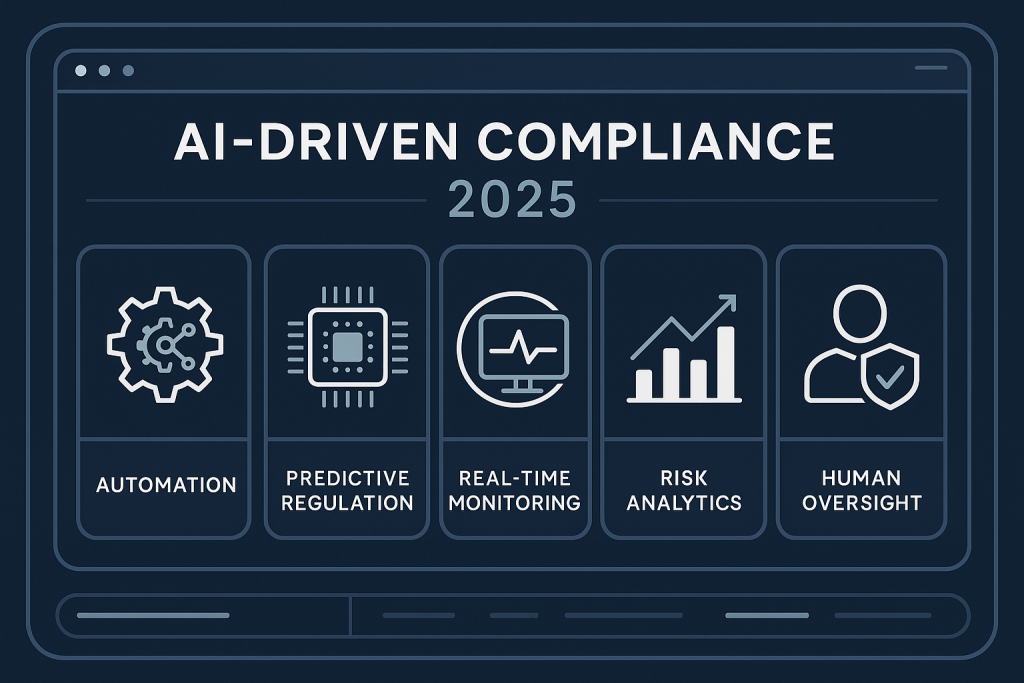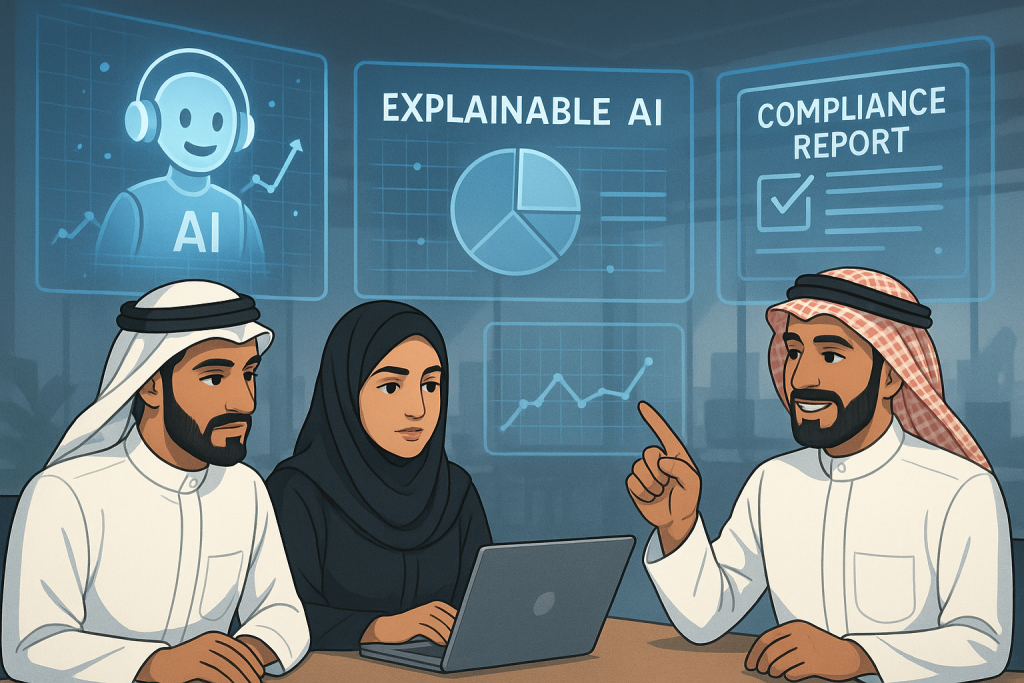Next-Gen Compliance Evolution

By 2025, AI-driven compliance will no longer play a supporting role. Instead, it will be a business necessity. In Saudi Arabia and beyond, companies will rely on compliance automation to anticipate regulations, reduce risks, and build lasting trust.
As Gartner predicts, “By 2026, over 40% of compliance activities in large enterprises will be automated by AI-powered tools.”
Anticipatory Regulation and Real-Time Integration
Instead of reacting to changes after they are published, AI will analyze draft regulations and turn them into actionable controls before they take effect.
Regulators such as the Saudi Data & AI Authority (SDAIA) and the National Cybersecurity Authority (NCA) are moving toward machine-readable APIs. This allows compliance platforms to pull requirements directly, creating seamless alignment between businesses and regulators. Learn more in our guide on Understanding PDPL for Businesses

Continuous Compliance Built Into Workflows
Traditional compliance relied heavily on scheduled audits. By 2025, compliance will be embedded into daily operations.
For example:
- HR platforms will automatically block uploads of sensitive health data that breach PDPL.
- Procurement systems will reject vendors without ISO 27001 certification.
See how automation in law is transforming legal workflows
Smarter Risk Analytics for Strategic Decisions
AI will transform how businesses prioritize risks. By analyzing user behaviors, asset valuations, and external threat intelligence, AI will provide risk scores that highlight the most critical issues.
Making Compliance Accessible for SMEs
Until recently, only large corporations could afford advanced compliance systems. In 2025, SMEs will benefit from plug-and-play AI tools with features such as:
- Pre-configured templates for PDPL, GDPR, SOC 2
- Automated consent tracking
- Audit-ready reporting
Explore our article on AI in Saudi Arabia: Key Business Trends
The Human Factor and Explainable AI

Even though AI automates most checks, human oversight remains critical. Platforms are evolving to show why alerts are raised, citing the specific regulation or anomaly.
As Professor Cary Coglianese of the Penn Program on Regulation notes, “AI should augment, not replace, human judgment in compliance. Transparency is what maintains accountability.”
Breaking Down Compliance Silos
In 2025, AI will unify privacy, security, and resilience frameworks. Instead of separate silos, businesses will benefit from:
- Shared logs supporting multiple frameworks
- PDPL and GDPR privacy integrated with ISO 27001
- Streamlined evidence collection
This holistic view will strengthen resilience and build customer trust.
Preparing for the Future in Saudi Arabia
To prepare for AI-driven compliance, businesses should:
- Audit tools and data sources
- Identify quick wins such as consent automation
- Pilot one framework (e.g., PDPL)
- Expand to regulator APIs and cloud integrations
- Keep humans in the loop with explainable dashboards
Early adopters will turn compliance into a competitive advantage.
The Role of Platforms Like Sahl
Platforms such as Sahl’s AI-powered compliance automation are helping Saudi businesses manage frameworks like PDPL, GDPR, ISO 27001, and SOC 2.
By embedding monitoring, anticipating regulatory changes, and offering transparent dashboards, Sahl provides both assurance and agility for organizations that want to future-proof compliance.
FAQs on AI-Driven Compliance
- What is AI-driven compliance?
It is the use of artificial intelligence to automate, monitor, and predict compliance requirements. - How does AI reduce compliance risks?
By embedding checks into workflows and predicting regulatory changes, AI prevents violations before they occur. - Can SMEs benefit from compliance automation?
Yes, affordable tools now provide continuous monitoring and reporting for smaller businesses. - Why is explainability important?
It ensures humans understand why alerts were raised and can validate AI-driven recommendations. - What’s unique about compliance in Saudi Arabia?
Businesses must align with PDPL and NCA frameworks, making AI automation especially valuable.

